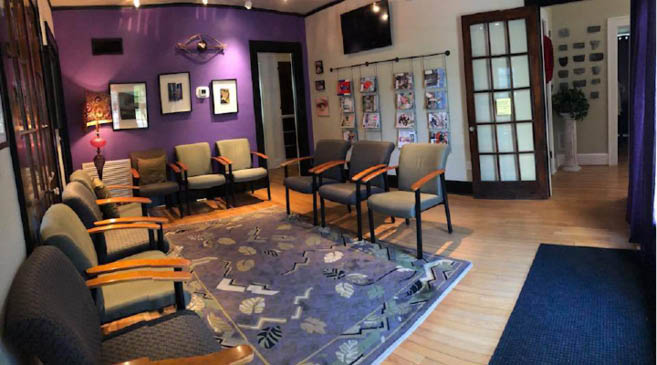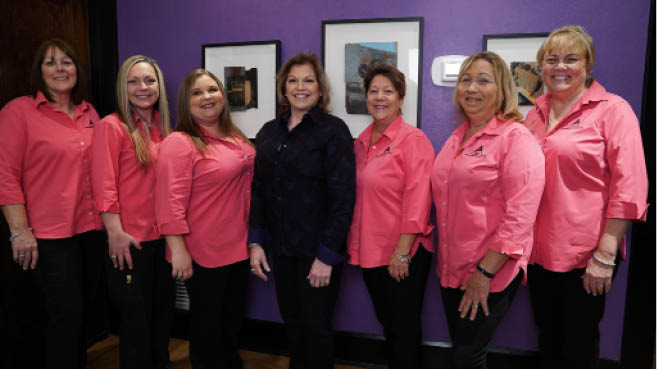In medical school, residency, and fellowship, we are fully committed to honing our skill sets. We carry this commitment to our craft into practice, where we strive to be the best ophthalmologists we can be. But sometimes, in this pursuit, we focus so intently on our clinical and surgical outcomes that we forget about the humanness of practicing medicine. This article presents several practices I have adopted to help me prioritize the human connection and stay close with my patients.
PRACTICE EMPATHY
In residency, I was lucky to have Johnny Wells, MD, as my mentor. I performed surgery with Dr. Wells every Tuesday, and, as the chief resident, I was able to cover his practice when he was out of town. Through this experience, I discovered that Dr. Wells called each of his patients on the night before surgery and again on the evening after surgery to check in on them. I adopted this practice 30 years ago and have called every one of my patients since. Although a simple act, this has helped me connect with my patients and has made my patients feel special and well cared for.
Throughout our experiences, we accrue knowledge and the practical application of that knowledge. But repetition of an applied task is what develops a skill set. We sometimes assume that we are naturally empathetic because we are doctors. But, in truth, we can be calculated. We focus so myopically on the end result when, instead, we should be thinking about the full disease process. And the first part of the disease process is understanding the patient and recognizing that he or she is likely scared. Fear is an emotion we are all familiar with, and I try to always remember this and apply empathy to every patient encounter.
ADD PERSONAL TOUCHES
I live and practice in the small town of Venice, Florida. My office is in a 1926 Italian Renaissance house that is very much a home (Figure 1). Touches of my favorite color—purple—can be found in our waiting room (Figure 2). Additionally, as an art collector, I feature eye-themed artwork all around my practice. My chosen decor adds a personal element to the space, and it has become a conversation starter, as patients often ask where I’ve acquired certain pieces. Over the years, patients have also gifted me pieces of their own art, which I make sure to display.

Figure 1 | Stephenson Eye Associates in Venice, Florida.

Figure 2 | Personal touches in the Stephenson Eye Associates’ waiting room, such as a vibrant color and unique artwork, help patients feel connected to Dr. Stephenson and more at home.
In my practice, I work with six other individuals, and I have found one key to success to be our employees’ longevity. My office manager/surgical counselor/dearest friend has been with my practice for 30 years, since I first opened the doors. But, for all of our employees, their dedication can partly be attributed to our relationships. Our staff feels like a family, and I’ve always believed it is important to know my staff members professionally and personally (Figure 3).

Figure 3 | Dr. Stephenson and staff.
Even more importantly, I make it a point to know my patients personally. For example, I knew that Mr. Smith was married for 72 years and that his wife had recently passed away. We were able to send him a card because one of our staff members regularly looks through the obituaries featured in our local news outlets. Then, when Mr. Smith’s great-granddaughter graduated from Yale, I sent him a card to congratulate her.
I myself am a parent of a wonderful 24-year-old. When my daughter was younger, I often brought her into the office because her schools were located nearby. I also always kept a picture of her on our counter and would change it monthly. When she got into high school, I stopped this practice. However, patients still ask me, “Why don’t you have a picture of your daughter up?” They care about her sometimes more than they care about me. But, because I put humanness into my practice, my relationships with my patients are better, as are my practice processes.
SET A POSITIVE TONE
I am a firm believer that every member of my team must be on the same page. My mother always said to me, “You lead the parade. If you’re in a crappy mood, the rest of your office will be in a crappy mood.” When a patient walks into my office, I want him or her to feel right at home. In turn, patients are immediately greeted by my staff, but that didn’t happen overnight. As noted above, I’ve been fortunate to have longevity in my employees, so they know what I desire for my practice. Alternatively, when I’m not in a good mood—because, hey, it happens to all of us—my staff members have been with me long enough to know how to help me snap out of it.
BE KIND
Kindness is a behavior with ethical characteristics. It is based on our values, our ethics, and our beliefs. In order to be kind, we must be mindful of the power of talk and think before we speak. And we must practice empathy and sympathy, which are different.
After I graduated from residency, I experienced a life-changing event. I had a tumor removed from my spine. I then experienced a progressive bilateral foot drop and am now handicapped, so I can use only one leg to perform phacoemulsification. This experience has been hard, but it has taught me how to use my not-wellness, if you will, in a positive way to connect with my patients. When a patient comes in with a history of back surgery or a physical handicap, I can empathize. Further, I am sensitive to my patients’ physical needs. My staff consists of all women, and we cannot lift patients who are in wheelchairs. I make it a point to inform patients well in advance that, if they are handicapped, they will need to bring along someone to help them in the wheelchair.
CONCLUSION
Sometimes kindness comes naturally, but sometimes we have to work at it. Remember how kindness makes you feel. Patients will not remember where you trained, how many articles you have written, or how successful you are; they will remember how you made them feel. So be yourself, and be kind to your patients. Also, remember that small gestures like sending a card or putting your hand on someone’s shoulder can make a big difference in helping patients feel well cared for—and that’s ultimately what we all set out to do each and every day.



